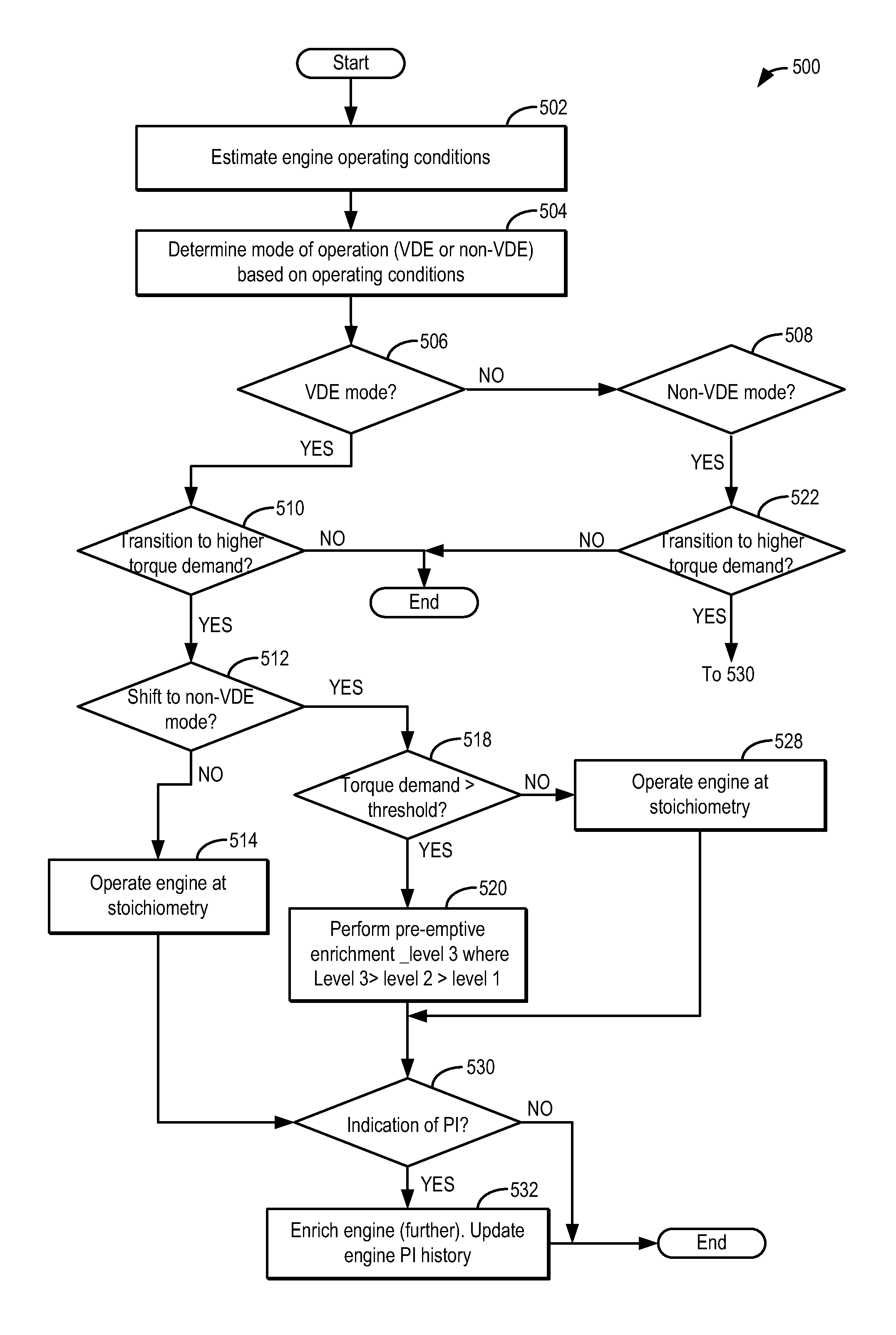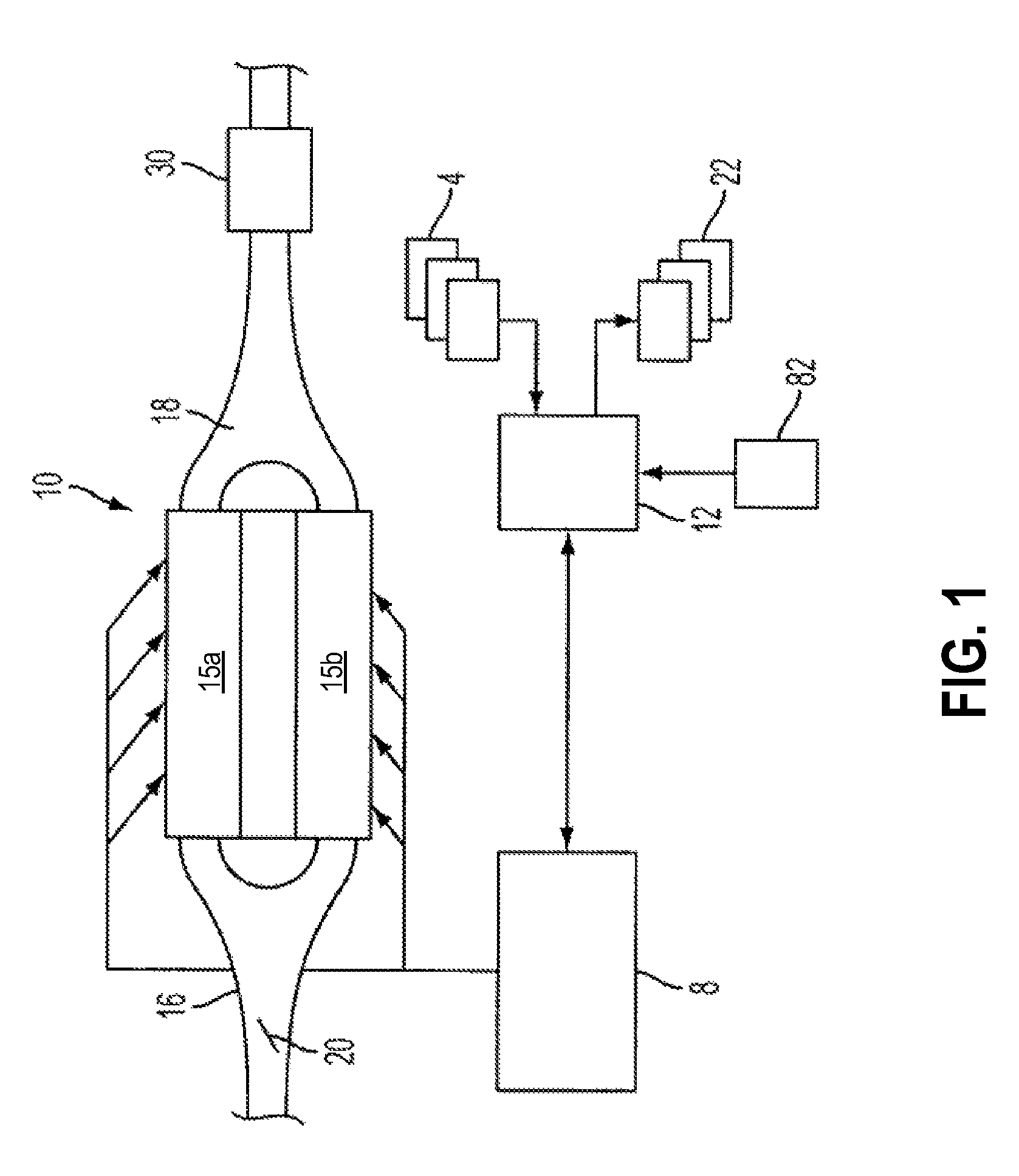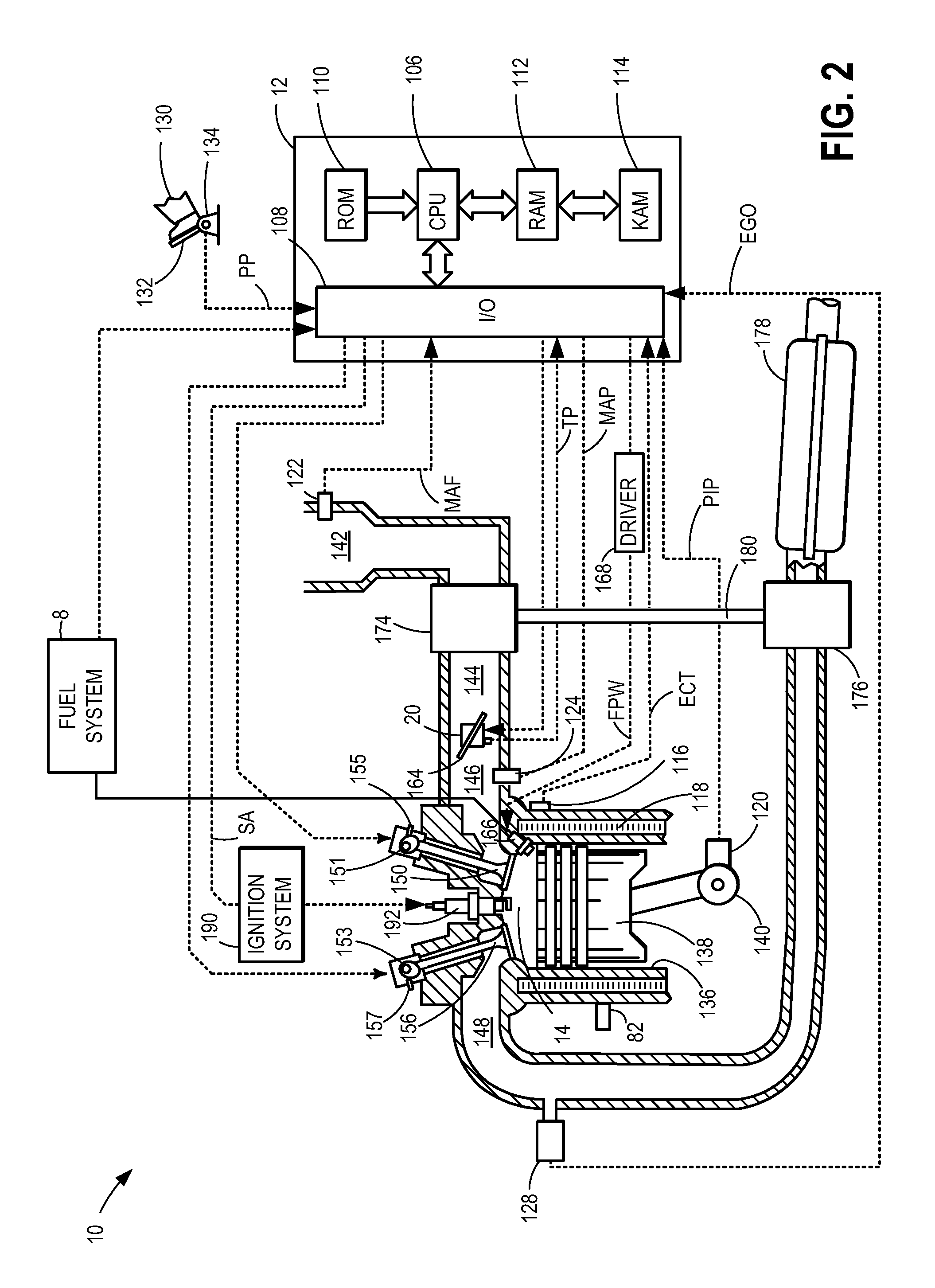Methods and systems for pre-ignition control in a variable displacement engine
a variable-diameter engine and pre-ignition control technology, which is applied in the direction of electric control, fuel injection control, machines/engines, etc., can solve the problems of abnormal combustion, abnormal combustion events, and vde engine vde engine events, so as to increase the manifold pressure, reduce displacement, and increase fuel economy
- Summary
- Abstract
- Description
- Claims
- Application Information
AI Technical Summary
Benefits of technology
Problems solved by technology
Method used
Image
Examples
Embodiment Construction
[0016]Methods and systems are provided for reducing an incidence of pre-ignition in a variable displacement engine system (such as the engine system of FIGS. 1-2) during cylinder reactivation to high load conditions. When transitioning from a VDE mode to a non-VDE mode, fueling of a reactivated engine cylinder may be adjusted so as to preemptively address potential pre-ignition events. An engine controller may perform a control routine, such as the routine of FIGS. 3 and 5, to enrich a cylinder when it is reactivated to higher than threshold loads. As shown at FIG. 4, the enrichment may be adjusted based on parameters that affect the amount of oil that may have accumulated in the cylinder during the preceding deactivation. The enrichment may be further adjusted in a closed-loop fashion based on pre-ignition incidences during the reactivation. Example enrichments during cylinder reactivation from a VDE mode are shown at FIGS. 6-8. In this way, pre-ignition may be better anticipated a...
PUM
 Login to View More
Login to View More Abstract
Description
Claims
Application Information
 Login to View More
Login to View More - R&D
- Intellectual Property
- Life Sciences
- Materials
- Tech Scout
- Unparalleled Data Quality
- Higher Quality Content
- 60% Fewer Hallucinations
Browse by: Latest US Patents, China's latest patents, Technical Efficacy Thesaurus, Application Domain, Technology Topic, Popular Technical Reports.
© 2025 PatSnap. All rights reserved.Legal|Privacy policy|Modern Slavery Act Transparency Statement|Sitemap|About US| Contact US: help@patsnap.com



